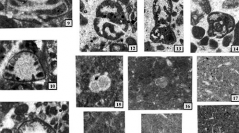

 Comptes Rendus Palevol
1 (8) - Pages 681-688
Comptes Rendus Palevol
1 (8) - Pages 681-688The Mio-Pliocene series filling up the intermontane basin of Hammam N’Baïls (Guelma region, NE Algeria) corresponds to a fluviatile sequence beginning by polygenic conglomerates that contain several Mesozoic carbonate pebbles. The inventory and the micropalaeontological study of these pebbles attest the occurrence, at the base of the Sellaoua unit (southern Tellian foreland of Maghrebides), of a Jurassic–Berriasian carbonate-dominated series, unknown in outcrops, showing some affinities with the synchronous North-Atlasic Algerian and Tunisian ones respectively to the W-SW and to the E-NE. This series was deposited on the South-Tethyan margin, to the south of the ‘Tethyan trough’ joining the incipient Atlantic Ocean and the Ligurian Ocean. The Upper Miocene and Pliocene extensional tectonics and the halokinetic motions, induced by the presence of large Triassic evaporites masses, have probably uplifted towards the surface this Mesozoic Sellaoua-type material, which, after erosion, has supplied the herein studied fluviatile conglomerates.
micropalaeontology, Jurassic–Earliest Cretaceous pebbles, Hammam N’Baïls Basin, Sellaoua unit, Algeria